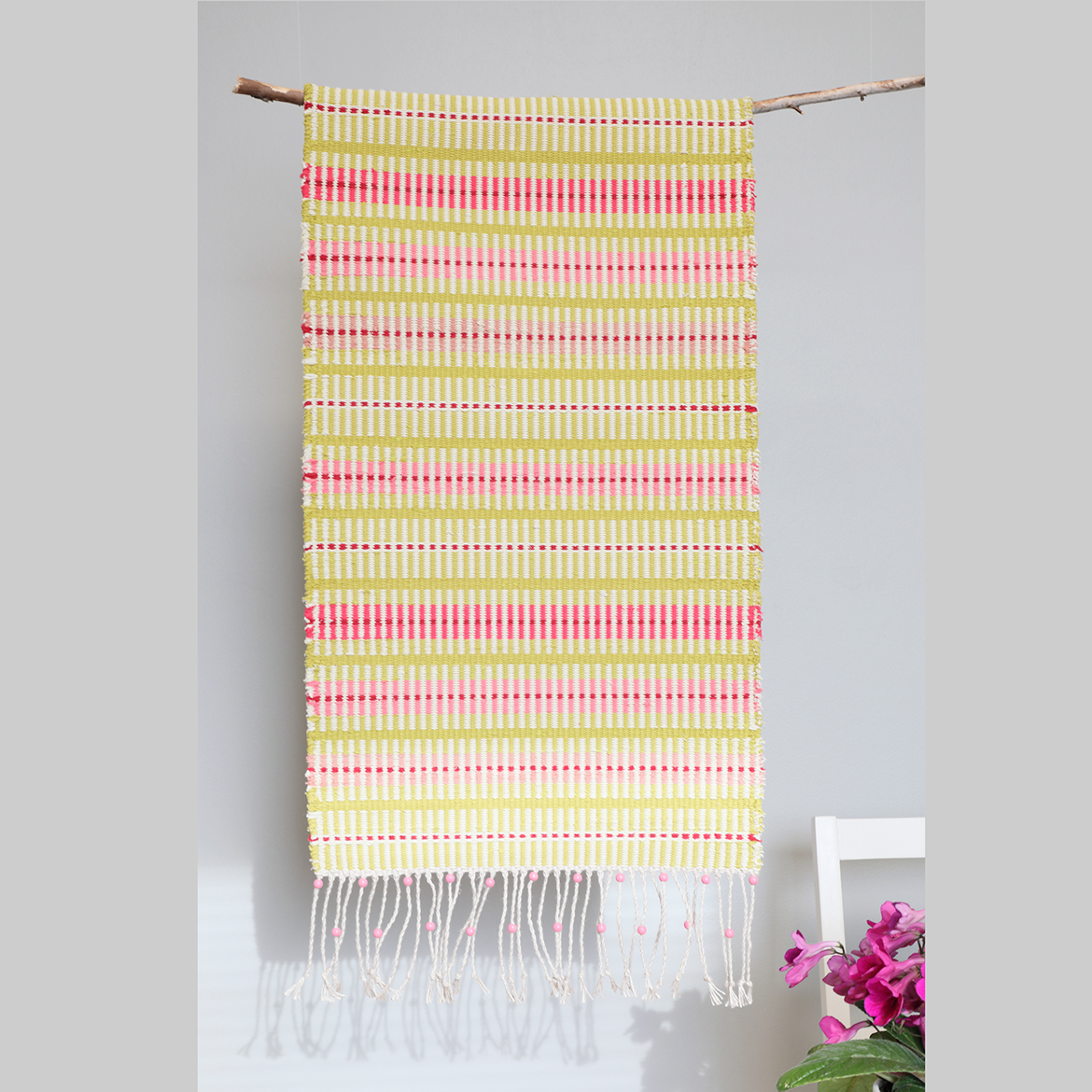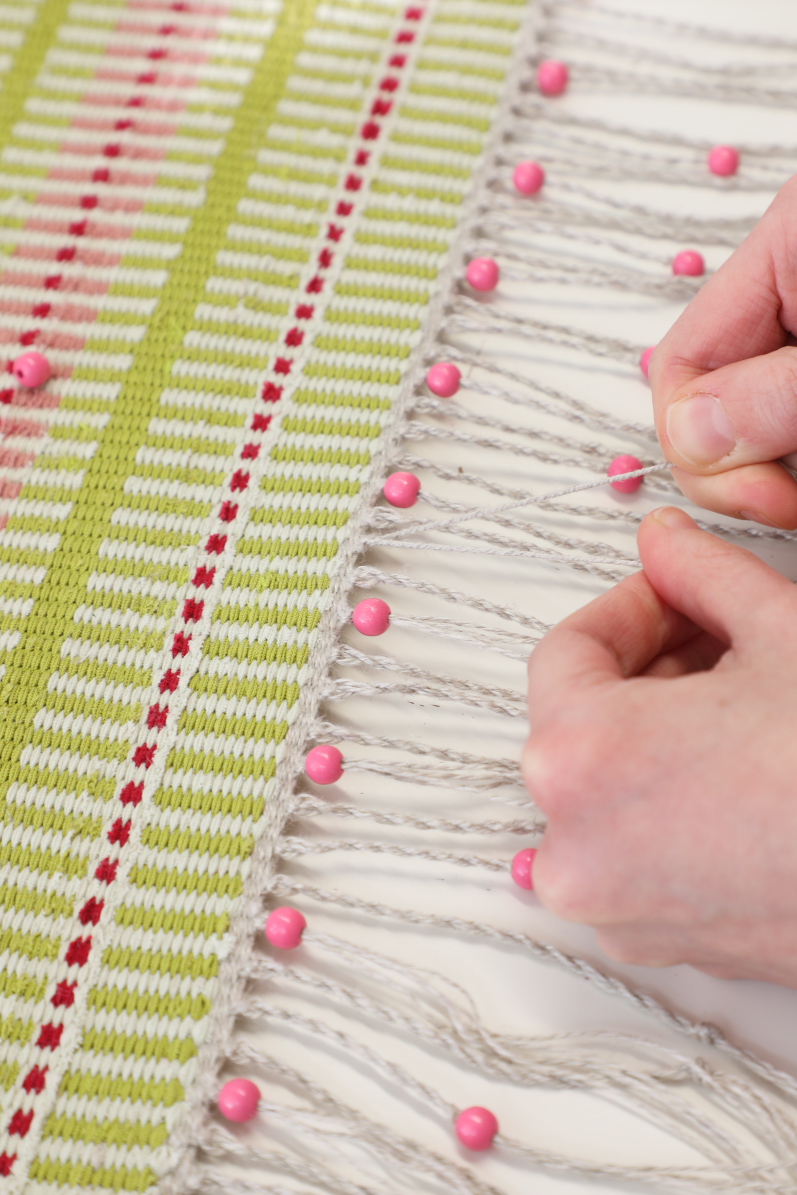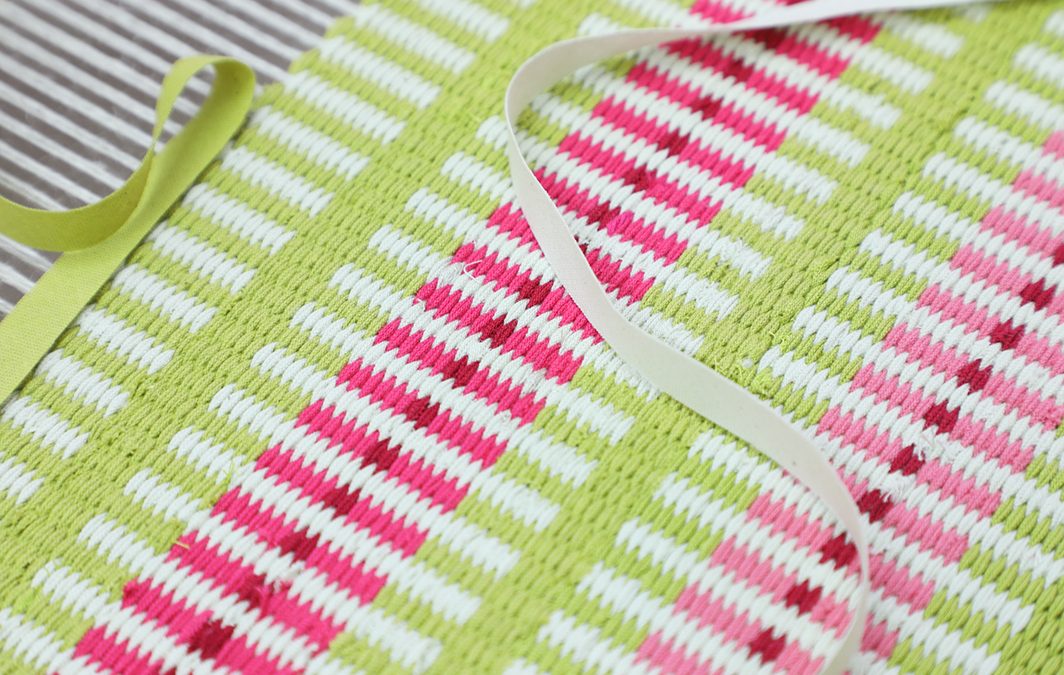We wove the Layers ryas for the previous issue, but there was still some warp left. Kirsi wove a summer spirited wall hanging at the end of that warp. The wall hanging is woven in same way as a traditional Finnish ”raanu”, a thick and vertical striped woollen tapestry.
A familiar situation for all of us. The weave is finished, but there is still warp left. Weavers are clever and economical and weave away all kinds of yarns and materials in the end of the warp. Many times these additional weaves are joyful surprises: Oh, you did it in that way. It looks great! The warp for the Layers ryas was wound of heavy linen yarn, but you can weave this tapestry for example at the end of a cotton twine warp. Drafts for 2-saft and 4-saft weaves are on the left page.
The 9-ply cotton twine is a suitable yarn, if you want to wind a new warp for the tapestry. Try different kind of yarns and materials for the weft. With chenille yarns you get a smooth velvety surface to the fabric. A traditional ”raanu” tapestry is woven of wool yarns, and often they were single ply yarns.

WEAVING DRAFT

The wall hanging was woven with this warp:
| The warp | Linen 8/2 (= 8/2 Linvarp) unbleached, tex 210×2, 1 kg = 2400 m, Garnhuset i Kinna |
| Warp | width 41 cm density 4 threads/cm amount of warp ends 164 + 2 lankaa amount of yarn needed 65 g/1 m |
| Reed | 40/1 |
| Weave | Weft faced rep |
| The weft | Poppana bias amount of weft yarn needed approx. 450 g/1m |
If you wind a new warp for the wall hanging:
| The warp | 9-ply Cotton Twine, tex 30×9, 1 kg = approx. 3 480 m, Suomen Lanka or a similar durable yarn |
| Warp | width 41 cm density 4 threads/cm amount of warp ends 164 + 4 amount of yarn needed approx. 47 g/1 m |
| Reed | 40/1 |
| Weave | Weft faced rep |

Wooden beads at the fringes:
1. fringe, a bead at the edge 2. fringe without a bead 3. fringe, a bead at halfway 4. fringe without a bead etc. 1. fringe: Draw the warp threads through the bead and make a twisted fringe. 3. fringe: Twist the fringe to the halfway and make a knot. Draw the warp threads through the bead and twist the rest of the fringe.

TIP!
Take a plant, scenery or an emotion as a source of the inspiration and keep it in your mind when you design stripes and choose the colors. A rhubarb leaf was the color base for this tapestry weave.
Arrange the colors freely.




